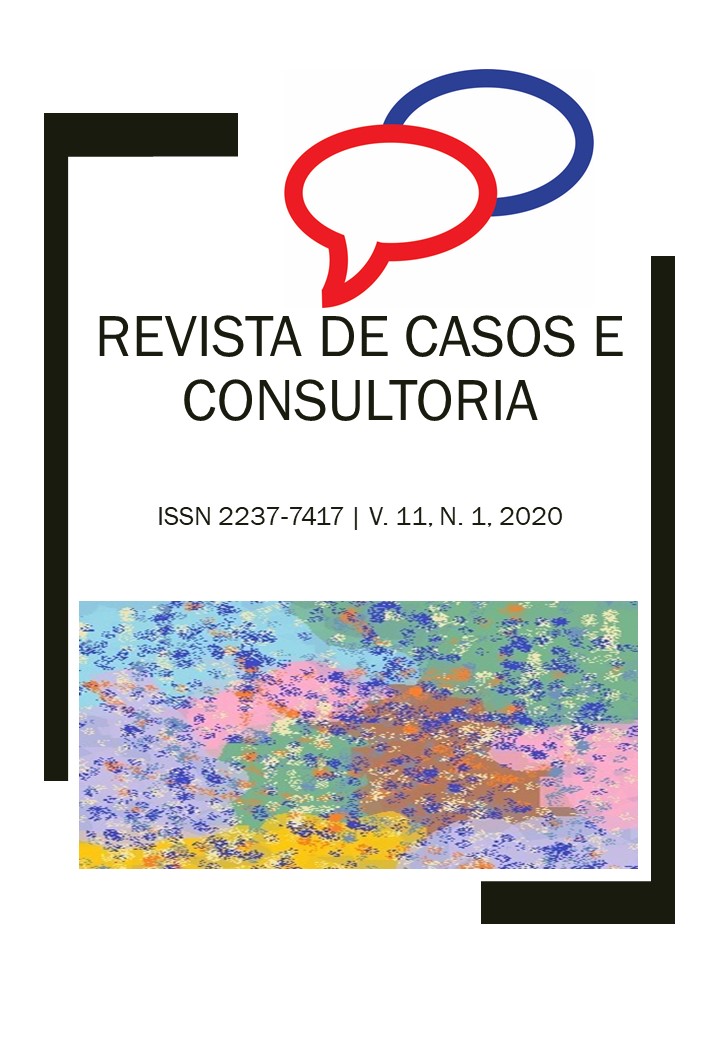Conocimiento y sensibilización de los farmacéuticos comunitarios del estado de Piauí sobre las interacciones entre alimentos y medicamentos
Palabras clave:
Interacciones alimentos-medicamentos; Farmacêuticos comunitários; Conocimiento.Resumen
El objetivo de este estudio fue evaluar el conocimiento y la conciencia de los farmacéuticos comunitarios en el estado de Piauí sobre las interacciones entre alimentos y medicamentos (IAM). El estudio transversal involucró una muestra de 145 farmacéuticos comunitarios de la ciudad de Teresina, PI. La recolección de datos se realizó mediante la aplicación de un formulario autoadministrado anónimo que contenía preguntas relacionadas con el tema. Los datos fueron analizados usando estática descriptiva e inferencial, usando el valor de P (<0.05) como referencia de significancia entre los datos. La mayoría de los encuestados (98,6%) afirmó tener conocimientos previos sobre el IAM, además de creer en la importancia de tener conocimientos y orientar al paciente. Además, la gran mayoría (85,5%) afirmó brindar atención al paciente. Los farmacéuticos obtuvieron una puntuación de conocimiento general de 8,5 sobre 16, que corresponde al 55,9%. Los puntajes más altos de conocimiento fueron para las interacciones alcohol-fármaco (93,0%), seguidos de las interacciones comunes entre alimentos y medicamentos (57,5%) y el tiempo de ingestión de fármacos con alimentos (38,2%), lo que refleja con un bajo nivel de conocimiento general sobre las IAM. Estos hallazgos respaldan la necesidad de cursos de capacitación y educación para farmacéuticos sobre interacciones medicamentosas, especialmente aquellas asociadas con alimentos y medicamentos.
Descargas
Citas
JENSEN, K. et al. Developing a molecular roadmap of drug-food interactions. PLoS Comput Biol., v.11, n.2, e1004048, 2015.
ZAWIAH, M. et al. Food-drug interactions: Knowledge among pharmacists in Jordan. PLoS One., v.15, n.6, e0234779, 2020.
RADWAN, A. et al. Evaluation of community pharmacists' knowledge and awareness of food-drug interactions in Palestine. Int J Clin Pharm., v.40, n.3, p. 668-675, 2018.
SANTOS, S.L. F; BARROS, K.B.N.T; PRADO, R.M.S. Interações entre fármacos e nutrientes: ocorrência e manejo clínico. Rev. Ciênc. Méd. Biol., v.17, n.1, p.65-70, 2018.
SATHYANARAYANA RAO, T. S; YERAGANI, V. K. Hypertensive crisis and cheese. Indian J Psychiatry., v.51, n.1, p.65-6, 2009.
LOMBARDO, M.; ESERIAN, J. K. Fármacos e alimentos: interações e influências na terapêutica. Infarma, v.26, n.3, p.188-192, 2014.
TOKKA, A.S.A; IDRIS, K.M.A. Assessment of the awareness, knowledge, attitude, and practice of sudanese community pharmacists, in khartoum state, about drug interactions. World Journal of Pharmaceutical Research, v.6, n.4, p. 409-426, 2017.
BENNI, J. M. et al. Knowledge and awareness of food and drug interactions (FDI): a survey among health care professionals. International Journal of Pharmacology and Clinical Sciences, v.1, n.4, p. 97-105, 2012.
ENWEREM, N. M.; OKUNJI, P. O. Knowledge of Food and Drug Interactions among Nurses: Assessment Strategy for Continuing Education. International Journal of Higher Education,v.6, n.1, p.122–30, 2017.
DANTAS, M. D. A. et al. Interactions of tetracyclines with milk allergenic protein (casein): a molecular and biological approach. Journal of Biomolecular Structure and Dynamics.,v.38, n. 18, p. 5389-5400, 2019.
SUB LABAN, T.; SAADABADI, A. Monoamine Oxidase Inhibitors (MAOI). StatPearls [Internet]. Disponível: https://www.ncbi.nlm.nih.gov/books/NBK539848/. Acessado em: 06 de. setembro de. 2020.
LELAWONGS, P. et al. Effect of food and gastric acidity on absorption of orally administered ketoconazole. Clin Pharm., v.7, n.3, p. 228-235, 1988.
JOHNSON, B. F. et al. The effect of dietary fiber on the bioavailability of digoxin in capsules. J Clin Pharmacol., v.27, n.7, p. 487-490, 1987.
ROHDE, L. E.; ASSIS, M. C.; RABELO, E. R. Dietary vitamin K intake and anticoagulation in elderly patients. Curr Opin Clin Nutr Metab Care., v.10, n.1, p.1-5, 2007.
NUTESCU, E. A. et al.Warfarin and its interactions with foods, herbs and other dietary supplements. Expert Opin Drug Saf., v.5, n.3, p.433-451, 2006.
SATO, J. et al. Influence of usual intake of dietary caffeine on single-dose kinetics of theophylline in healthy human subjects. Eur J Clin Pharmacol., v.44, n.3, 295-298, 1993.
DIXIT, A.; MAJUMDAR, G.; TEWARI, P. Hyperkalemia in ambulant postcardiac surgery patients during combined therapy with angiotensin-converting enzyme inhibitor, spironolactone, and diet rich in potassium: A report of two cases and review of literature. Ann Card Anaesth.,v.22, n.2, p.162-168, 2019.
LENZ TL. Drug–Alcohol Interactions. American Journal of Lifestyle Medicine., v.7, n.4, p. 250–2, 2013.
MOORE, A. A.; WHITEMAN, E. J. Ward KT. Risks of combined alcohol/medication use in older adults. The American journal of geriatric pharmacotherapy., v.5, n.1, p.64–74, 2007.
ALONZO, M. M.; LEWIS, T. V.; MILLER, J. L. Disulfiram-like Reaction With Metronidazole: An Unsuspected Culprit. . J Pediatr Pharmacol Ther., v.24, n.5, p. 445-449, 2019.
LIU L. et al. GC-MS based metabolomics of CSF and blood serum: Metabolic phenotype for a rat model of cefoperazone-induced disulfiram-like reaction. Biochemical and Biophysical Research Communications., v.490, n.3, p.1066-1073, 2017.
Lacy C, Lora A, Goldman M. Drug information handbook. 11° edição. Hudson: Lexi-comp; 2002.
MANTYLA, R. et al. Impairment of captopril bioavailability by concomitant food and antacid intake. Int J Clin Pharmacol Ther Toxicol., v.22, p.626-9, 1984.
NOLTE KENNEDY, M. S.; MASHARANI, U. Pancreatic Hormones & Antidiabetic Drugs. In: Basic & Clinical Pharmacology.13° ed. Estados Unidos: McGraw-Hill Education, 2015.
ABBASI, N. M. et al.The role of clinical pharmacists in educating nurses to reduce drug–food interactions (absorption phase) in hospitalized patients. Iran J Pharm Res., v.10, p.173–7, 2011.
EL LASSY, R. B. M.; OUDA, M. M. The Effect of Food-Drug Interactions Educational Program on Knowledge and Practices of Nurses Working at the Pediatric Out-Patients’ Clinics in El-Beheira General Hospitals. Journal of Integrated Health Science., v.8, n.4, p. 34-48, 2019.

 Português (Brasil)
Português (Brasil) English
English Español (España)
Español (España)